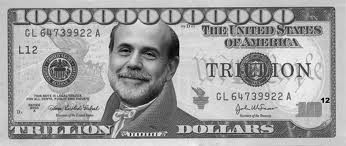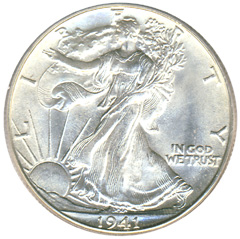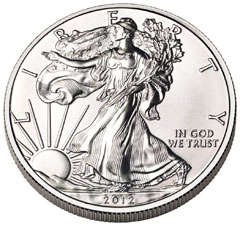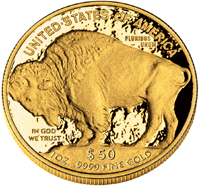 By GE Christenson
By GE Christenson
We all know that our cost of living in increasing, but how much?
The official government statistics assure us that inflation is running around 2% per year. It reminds me of the line attributed to Groucho Marx, “Who are you going to believe, me or your own eyes?”
But, your cost of living increase – your personal inflation rate – may be much larger or smaller than that of the person next door. Your spending choices matter a great deal in determining your personal inflation rate.
- I think we can all agree that some items are increasing much faster than others. A few that come to mind are college tuition, medical care, hospital costs, and health insurance. Several that increase more slowly are postage and milk. If you spend more on medical care and health insurance than on postage, your cost of living increase will be much larger than the person who buys more stamps than health care.
- If the official CPI goes up, then social security payments increase and total government expenses increase. Hence, government has an incentive to want low CPI inflation statistics. The US government has changed the process and the formula several times since the 1980s. The result, of course, is that the official CPI is low. Maybe it is fair, maybe not, but it is the official story, and it helps keep social security payments low.
- The various statistical measures used to calculate the CPI have been discussed and criticized in detail in many other publications. In the opinion of many people, they don’t reflect economic reality for most people.
- Other writers disagree and assure us the inflation rate is low.
- John Williams, a competent economist and statistician, computes the annual inflation rate at about 9%. He uses the statistical calculation process that was used by the government in 1980.
- Dennis Miller did an inflation rate survey. It was not intended to be statistically robust – just practical. His readers responded with an average inflation rate of 8%, but 23% of the respondents thought their personal rate of inflation was over 11% per year.
- The Deviant Investor did a similar survey and received a large number of responses. Our readers thought their average inflation rate was nearly 8% per year, while 39% thought it was higher than 9% per year.
- Rex Nutting thinks it is close to 3% per year and that most of us are “CPI Deniers.” Mainstream media mostly agrees – but I can’t find anyone (in casual conversation) in a grocery store who thinks food prices are only increasing 2 – 3% per year.
I estimate my personal inflation rate at about the average found in the surveys – around 8% per year. I am one of those “CPI Deniers.” Most people I know are “CPI Deniers.”
So How Important is a Few Percent Per Year?
A few percent seems unimportant, but over a decade it becomes very important. Let’s assume in this very simple example that your expenses increase 8% per year, and your income increases 3% per year. In year one your income was much larger than your expenses, and you saved the difference.
Sample Inflation Calculation
| Year | Income | Expenses | Net to Savings |
| 1 | 80,000 | 60,000 | 20,000 |
| 2 | 82,400 | 64,800 | 17,600 |
| 3 | 84,872 | 69,984 | 14,888 |
| 4 | 87,418 | 75,583 | 11,835 |
| 5 | 90,041 | 81,629 | 8,411 |
| 6 | 92,742 | 88,160 | 4,582 |
| 7 | 95,524 | 95,212 | 312 |
| 8 | 98,390 | 102,829 | (4,440) |
| 9 | 101,342 | 111,056 | (9,714) |
| 10 | 104,382 | 119,940 | (15,558) |
By year 8, in this simple example, the cost increases overwhelmed your income, and you were forced to withdraw from savings. Of course, in the real world, there are more variables and adjustments. We cut back on expenses, increase credit card debt, take a second job, win the lotto, file for bankruptcy – whatever. But the critical point is that your personal inflation rate is important, and a few percent over a decade can make a huge difference.
What to Do?
- Cut back on expenses.
- Get out of debt, and stop paying interest.
- Increase your income.
- Start a business, or take a second job.
- Make investments that pay more than the minimal interest provided by savings accounts and certificates of deposit.
- Invest in real things – gold, silver, diamonds, land, rental property.
- Invest in “ABCD,” which for David Stockman is “Anything Bernanke Can’t Destroy.” We Have Been Warned!
According to the surveys, real people think their personal inflation rate is around 8% per year with a significant percent of the responders claiming 9 – 11% or more per year. Are you going to believe what the government is telling you or your own experience?
GE Christenson, aka Deviant Investor
 Begin the analysis in 1971 when Nixon dropped the link between the dollar and gold. A pack of Marlboros cost (depending on local taxes) about $0.39. We paid about $0.36 for a gallon of gasoline. The DOW Index was about 850. Silver was priced at about $1.39.
Begin the analysis in 1971 when Nixon dropped the link between the dollar and gold. A pack of Marlboros cost (depending on local taxes) about $0.39. We paid about $0.36 for a gallon of gasoline. The DOW Index was about 850. Silver was priced at about $1.39.


 Last Wednesday, with New York gold down over $40 per ounce, even long time gold bulls were advising caution before committing to further investment. Some precious metals dealers reported a flood of panic selling by anxious investors who were unloading physical coin and bar.
Last Wednesday, with New York gold down over $40 per ounce, even long time gold bulls were advising caution before committing to further investment. Some precious metals dealers reported a flood of panic selling by anxious investors who were unloading physical coin and bar. The outlook for gold has turned profoundly negative. With prices down over 4% since the start of the year, gold is off to the worst start since 2001. Billionaire investors George Soros and Louis Moore Bacon have dramatically slashed their gold holdings and Bloomberg reports that money managers have liquidated gold and precious metal holdings for six straight weeks, the longest stretch of outflows since the first quarter of 2011.
The outlook for gold has turned profoundly negative. With prices down over 4% since the start of the year, gold is off to the worst start since 2001. Billionaire investors George Soros and Louis Moore Bacon have dramatically slashed their gold holdings and Bloomberg reports that money managers have liquidated gold and precious metal holdings for six straight weeks, the longest stretch of outflows since the first quarter of 2011. You know the world is changing when the head of the world’s biggest bond fund recommends gold as his first asset choice.
You know the world is changing when the head of the world’s biggest bond fund recommends gold as his first asset choice.


 By: Axel Merk
By: Axel Merk By:
By: 

 By:
By: